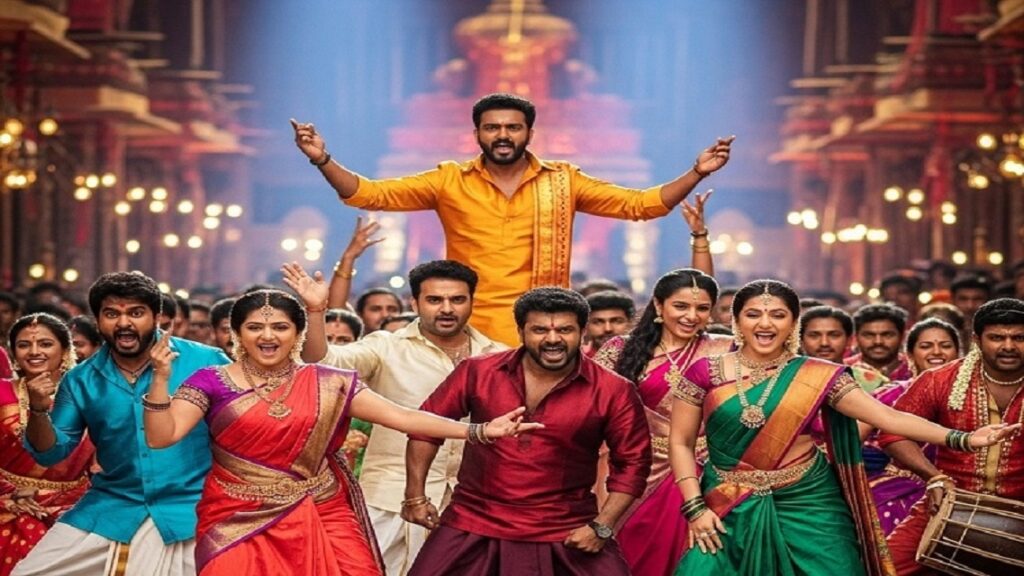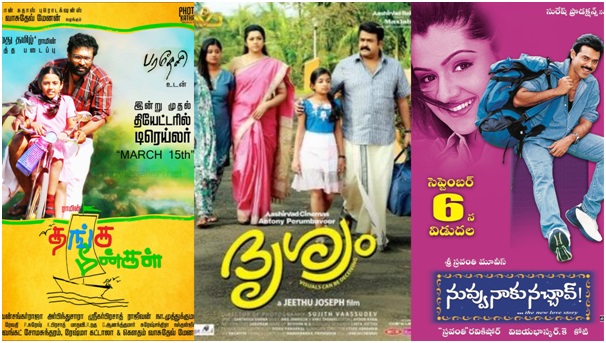South Indian cinema, encompassing Tamil, Telugu, Kannada, and Malayalam film industries, has seen a meteoric rise in popularity across India and globally. Once overshadowed by Bollywood, these regional industries are now captivating audiences with their unique storytelling, technical brilliance, and cultural authenticity. This blog explores the key factors driving the growing appeal of South Indian movies films.
Compelling Storytelling and Diverse Genres
South Indian films are renowned for their engaging narratives that blend emotion, action, and drama. Unlike the formulaic romance or family drama often associated with Bollywood, South Indian cinema offers a wide range of genres, from epic historicals like Baahubali to intense thrillers like Drishyam. These films often weave socially relevant themes with entertainment, resonating with diverse audiences. For instance, Tamil films like Kaala address caste dynamics, while Telugu films like Pushpa explore gritty, real-world issues with larger-than-life characters. This versatility ensures there’s something for everyone, making South Indian cinema universally appealing.
Larger-Than-Life Cinematic Experience
South Indian films are celebrated for their grand scale and visual spectacle. Directors like S.S. Rajamouli have redefined Indian cinema with films like Baahubali and RRR, which combine breathtaking visuals, intricate action sequences, and massive production values. These movies offer a theatrical experience that rivals Hollywood blockbusters, drawing audiences to theaters for their sheer grandeur. The use of advanced VFX, meticulously choreographed stunts, and vibrant cinematography creates an immersive experience that captivates viewers, both in India and abroad.
Cultural Authenticity and Regional Pride
Unlike Bollywood’s often homogenized portrayal of Indian culture, South Indian films embrace regional languages, traditions, and identities. This authenticity resonates deeply with local audiences while introducing global viewers to the rich diversity of South India. For example, Malayalam cinema’s realistic storytelling in films like The Great Indian Kitchen highlights everyday struggles, earning critical acclaim. Similarly, Kannada films like Kantara celebrate local folklore and traditions, striking a chord with audiences who value cultural representation. This pride in regional identity fosters a loyal fanbase and amplifies word-of-mouth promotion.
Global Reach Through Streaming Platforms
The advent of OTT platforms like Netflix, Amazon Prime, and Disney+ Hotstar has been a game-changer for South Indian cinema. These platforms have made films accessible to a global audience, complete with subtitles and dubbed versions. Movies like KGF and Vikram have gained massive followings outside India, with streaming services promoting them to non-Indian viewers. The availability of high-quality content online has also introduced international audiences to South Indian stars like Allu Arjun and Vijay Sethupathi, further boosting the industry’s global appeal.
Star Power and Fan Culture
South Indian cinema thrives on its larger-than-life stars, such as Rajinikanth, Mahesh Babu, and N.T. Rama Rao Jr., who command devoted fanbases. These actors are not just performers but cultural icons, with fans celebrating their releases like festivals. The intense fan culture, amplified by social media, creates massive hype around new releases, ensuring strong box-office performance. Additionally, the rise of pan-Indian stars through crossover films has helped South Indian cinema transcend regional boundaries, attracting Hindi-speaking audiences and beyond.
Technical Excellence and Innovation
South Indian filmmakers are pushing boundaries with technical innovation. From pioneering motion capture technology in Adipurush to seamless CGI in Ponniyin Selvan, these films showcase world-class production quality. The industry’s focus on skilled technicians, talented music composers like A.R. Rahman, and visionary directors ensures a polished product that appeals to modern audiences. This commitment to excellence has earned South Indian films accolades at international film festivals, further elevating their reputation.
Conclusion
The rise of South Indian cinema is no accident—it’s a result of compelling storytelling, cultural authenticity, technical brilliance, and global accessibility. As these films continue to break language barriers and captivate audiences worldwide, their influence is set to grow even further. Whether it’s the emotional depth of a Malayalam movies or the grandeur of a Telugu epic, South Indian cinema is redefining what Indian films can achieve, making it a force to be reckoned with on the global stage.



